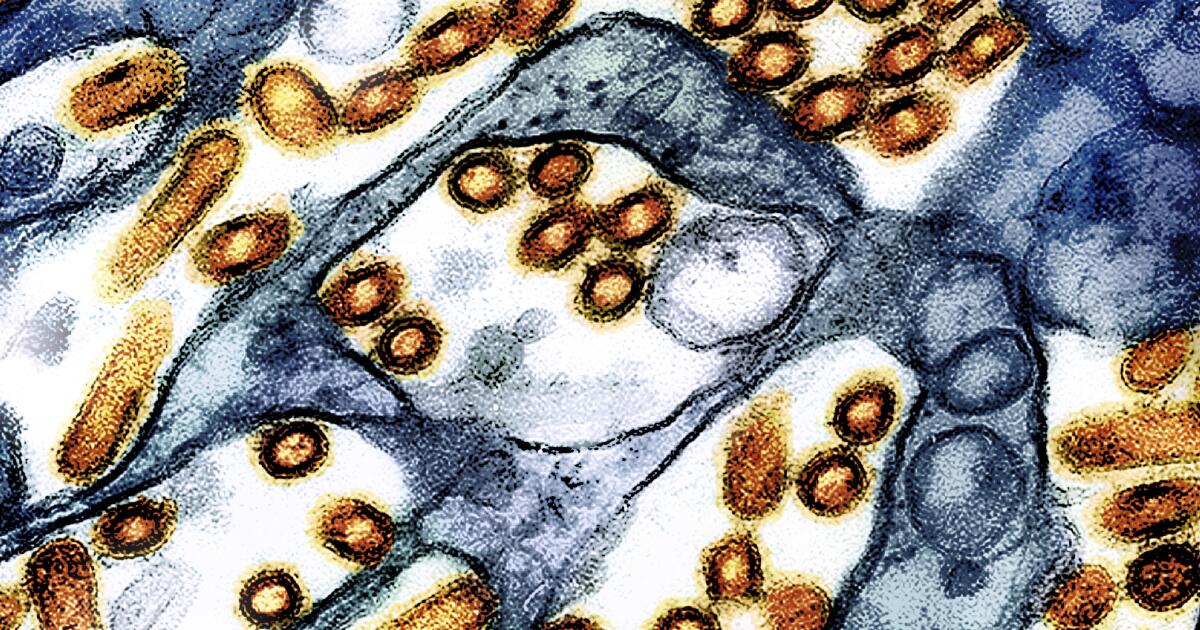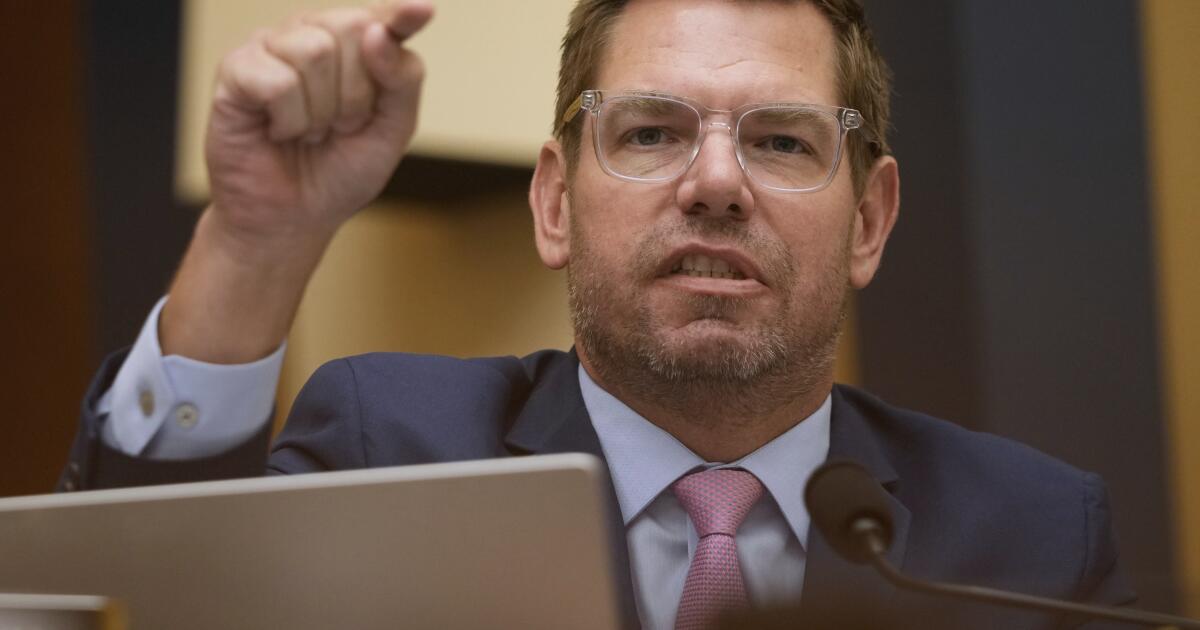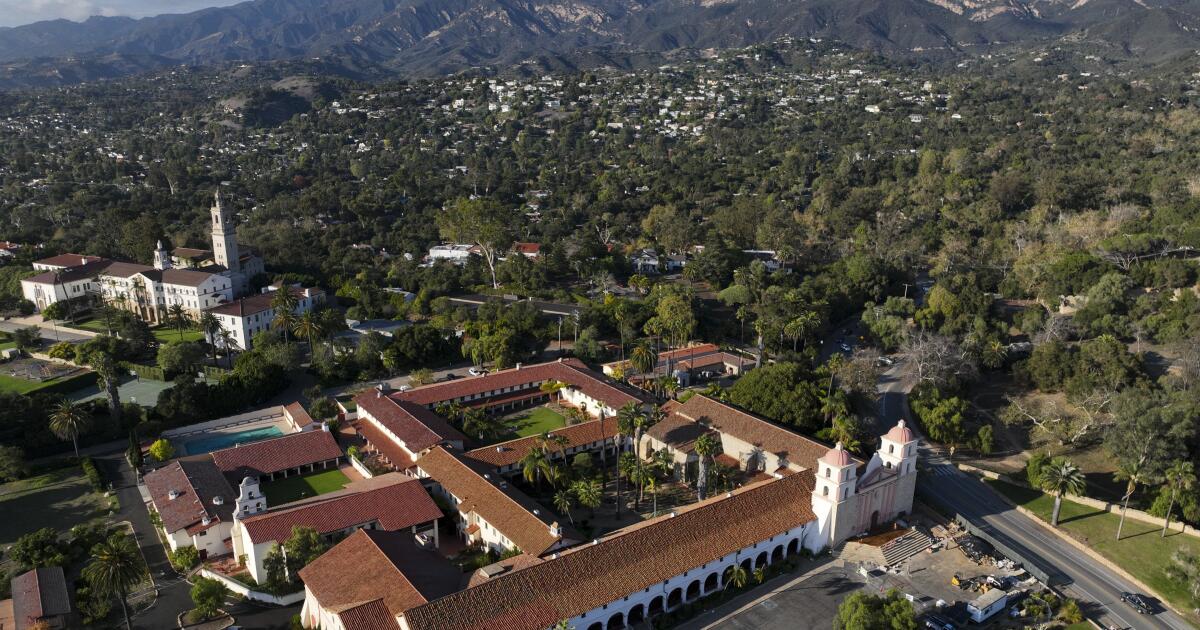World
How Dominican women fight child marriage and teen pregnancy while facing total abortion bans
AZUA, Dominican Republic (AP) — It was a busy Saturday morning at Marcia González’s church. A bishop was visiting, and normally she would have been there helping with logistics, but on this day she was teaching sex education at a local school.
“I coordinate activities at the church and my husband is a deacon,” González said. “The bishop comes once a year and children are being confirmed, but I am here because this is important for my community.”
For 40 years, González and her husband have pushed for broader sex education in the Dominican Republican, one of four Latin American nations that criminalizes abortion without exceptions. Women face up to 2 years in prison for having an abortion; penalties for doctors or midwives range from 5 to 20 years.
With a Bible on its flag, the Caribbean country has a powerful lobby of Catholics and evangelicals who are united against decriminalizing abortion.
President Luis Abinader committed to the decriminalization of abortion as a candidate in 2020, but his government hasn’t acted on that pledge. For now, it depends on whether he is re-elected in May.
To help girls prevent unplanned pregnancies in this context, González and other activists have developed “teenage clubs,” where adolescents learn about sexual and reproductive rights, self-esteem, gender violence, finances and other topics. The goal is to empower future generations of Dominican women.
Outside the clubs, sex education is often insufficient, according to activists. Close to 30% of adolescents don’t have access to contraception. High poverty levels increase the risks of facing an unwanted pregnancy.
For the teenagers she mentors, González’s concerns also go beyond the impossibility of terminating a pregnancy.
According to activists, poverty forces some Dominican mothers to marry their 14 or 15-year-old daughters to men up to 50 years older. Nearly 7 out of 10 women suffer from gender violence such as incest, and families often remain silent regarding sexual abuse.
For every 1,000 adolescents between 15 and 19, 42 became mothers in 2023, according to the United Nations Population Fund. And until 2019, when UNICEF published its latest report on child marriage, more than a third of Dominican women married or entered a free union before turning 18.
Dominican laws have prohibited child marriage since 2021, but community leaders say that such unions are still common because the practice has been normalized and few people are aware of the statute.
“In my 14-year-old granddaughter’s class, two of her younger friends are already married,” González said. “Many mothers give the responsibility of their younger children to their older daughters so, instead of taking care of little boys, they run away with a husband.”
Activists hope education can help prevent girls from facing this situation.
“There are myths that people tell you when you have your period,” said Gabriela Díaz, 16, during a recent encounter organized by the Women’s Equality Center. “They say that we are dirty or we have dirty blood, but that is false. We are helping our body to clean itself and improve its functions.”
Díaz calls González “godmother,” a term applied by Plan International to community leaders who implement the programs of this UK-based organization, which promotes children’s rights.
According to its own data, San Cristóbal and Azua, where González lives, are the Dominican cities with the highest rates of teenage pregnancy and child marriage.
To address this, its clubs accept girls between 13 and 17. Each group meets 2 hours per week, welcomes up to 25 participants and is led by volunteers like González.
In San Cristobal, also in southern Dominican Republic, the National Confederation of Rural Women (CONAMUCA) sponsors teenage clubs of its own.
“CONAMUCA was born to fight for land ownership, but the landscape has changed, and we have integrated new issues, such as food sovereignty, agrarian reform, and sexual and reproductive rights,” said Lidia Ferrer, one of its leaders.
Its clubs gather 1,600 girls in 60 communities, Ferrer said. The topics they study vary from region to region, but among the recurring ones are adolescent pregnancy, early unions and feminicide.
“The starting point is our own reality,” said Kathy Cabrera, who joined CONAMUCA clubs at age 9 and two decades later takes new generations under her wing. “It’s how we live and suffer.”
Migration is increasingly noticeable in rural areas, Cabrera said. Women are forced to walk for miles to attend school or find water, and health services fail in guaranteeing their sexual and reproductive rights.
“We have a government that tells you ’Don’t have an abortion’ but does not provide the necessary contraception to avoid it.”
She has witnessed how 13-year-old girls bear the children of 65-year-old men while neither families nor authorities seem to be concerned. On other occasions, she said, parents “give away” their daughters because they cannot support them or because they discover that they are no longer virgins.
“It’s not regarded as sexual abuse because, if my grandmother got pregnant and married at an early age, and my great-grandmother too and my mother too, then it means I should too,” Cabrera said.
In southern Dominican communities, most girls can relate to this, or know someone who does.
“My sister got pregnant at 16 and that was very disturbing,” said 14-year-old Laura Pérez. “She got together with a person much older than her, and they have a baby. I don’t think that was right.”
The clubs’ dynamics change as needed to create safe and loving environments for girls to share what they feel. Some sessions kick off with relaxation exercises and others with games.
Some girls speak proudly of what they have learned. One of them mentioned she confronted her father when he said she shouldn’t cut any lemons from a tree while menstruating. Another said that her friends always go to the bathroom in groups, to avoid safety risks. They all regard their godmothers as mentors who have their backs.
“They call me to confide everything,” González said. “I am happy because, in my group, no girl has become pregnant.”
Many girls from teenage clubs have dreams they want to follow. Francesca Montero, 16, would like to become a pediatrician. Perla Infante, 15, a psychologist. Lomelí Arias, 18, a nurse.
“I want to be a soldier!” shouted Laura Pérez, the 14-year-old who wants to be careful not to following her sister’s footsteps.
“I was undecided, but when I entered CONAMUCA I knew I wanted to become a soldier. In here we see all these women who give you strength, who are like you, but as a guide,” Pérez said. “It’s like a child seeing an older person and thinking: ’When I grow up, I want to be like that.’”
___
Associated Press religion coverage receives support through the AP’s collaboration with The Conversation US, with funding from Lilly Endowment Inc. The AP is solely responsible for this content.

World
Belgian police raid EU External Action Service in anti-fraud operation

Belgian authorities raided the offices of the European External Action Service (EEAS), the bloc’s diplomatic arm, on Tuesday morning as part of an anti-fraud investigation.
The premises of the College of Europe in the city of Bruges, which receives funding from the EU institutions, were also searched as part of the operation, as well as the private homes of individuals in Belgium.
The European Public Prosecutor’s Office (EPPO) said it requested the raids as part of a probe into suspected fraud related to EU-funded training for junior diplomats, and that three people were detained.
Euronews has reached out to the Belgian police for comment.
This is a developing story and our journalists are working on further updates.
World
Southern California man gets an unwanted housemate: A black bear in his crawl space
LOS ANGELES (AP) — Ken Johnson, 63, just got a new roommate last week — a black bear living in the crawl space under his home in Southern California.
The bear was seen on video footage clambering out from beneath his house Tuesday. He had installed a camera near the space back in June when he saw what looked like damage caused by an animal.
Nothing showed up on the camera until last week. And now he’s trying to figure out how to make it leave.
“It’s a huge bear,” Johnson said, describing it as tall as a table and bigger than the trash bins in front of his house. “It’s really unnerving because I don’t know if he’s going to tear everything up under there, I don’t know how to get him out.”
Johnson lives in Altadena, an unincorporated community northeast of Los Angeles that was devastated by the Eaton Fire in January. The fire killed at least 19 people and scorched thousands of structures, but it also tore through the Angeles National Forest, displacing wildlife from their natural habitats and destroying their food supply.
Shortly after the fire, at least two bears were found taking refuge in people’s evacuated homes in Altadena. State officials removed a massive, 525-pound (240-kilogram) adult male bear from a crawl space under a man’s home in January because utility crews could not get in to restore his power.
The bear was too large to be tranquilized, so employees from the California Department of Fish and Wildlife set a bear trap before taking it to the Angeles National Forest to be released with a tracking collar, the state agency wrote on social media. In February, another homeowner found himself with an unwelcome roommate, snapping pictures of a bear lounging by the pool and bringing food back to the crawl space at night, the Los Angeles Times reported.
“In the foothills of bear country, it’s important to close crawl spaces with bear-proof material in advance of winter months to discourage bears from denning and damaging property,” the CDFW wrote on social media after that incident.
While it’s not cold enough in Southern California for bears to hibernate, they will engage in a behavior called “denning,” where they take long naps but may emerge periodically to eat.
Since Tuesday, Johnson’s bear has come and gone from his house several times. He can hear “all kinds of clunking and booming” under the floorboards, and the bear rummaged through his trash cans on Sunday evening before retreating back to its chosen home.
It has dark brown fur with a tan snoot and two tan marks on its chest. Other neighbors have seen the same bear around the area before and call it Barry, although Johnson said he doesn’t know if the bear is male or female.
Johnson reached out to local law enforcement regarding the bear after it growled at him when he was changing his camera batteries. They told him to call state officials, but he was eventually directed to fill a form out online reporting a bear sighting. He checked a box for “Property Damage” and wrote, “It’s living under my house.”
So far, he hasn’t gotten a response.
CDFW spokesperson Cort Klopping said Monday afternoon that field experts were working on two other bear incidents in the region and would hopefully be able to respond to Johnson “soon.” He confirmed that the yellow tag on the bear’s ear indicated it was the state agency’s jurisdiction and not federal.
Bears in crawl spaces are a common occurrence this time of year, with teams potentially responding to five of these incidents in a week, Klopping said.
If the bear isn’t removed soon, Johnson mused, he might have to take matters into his own hands.
“The plan is, I’m going to buy a bunch of dinner rolls, and line them down the street up to the hole, and have some sandbags ready,” Johnson said. “When he comes down the street to get the dinner rolls, throw sandbags in there and cover it with pepper spray, and just hope he stays away.”
World
UK under ‘spy in the sky’ surveillance as hundreds of drones deployed across nation

NEWYou can now listen to Fox News articles!
Local authorities in the UK have dramatically increased their use of drones, fueling fears that the government is monitoring or even snooping on people from above, according to reports.
Data from the Civil Aviation Authority (CAA) show that more than 60 councils have hired staff certified to operate aerial drones, while at least a dozen other authorities are looking for guidance to launch similar programs.
Because the CAA only records pilots sponsored by their employers, experts in the UK have since warned the real number of publicly funded drone operators could be even higher.
NAVY SOLAR DRONE SOARS NONSTOP FOR 3 DAYS
A drone is seen in the sky as Chinese drone maker DJI holds a demonstration to display an app that tracks a drone’s registration and owner in Montreal, Canada, Nov. 3, 2019. (Reuters)
UK watchdog group Big Brother Watch has accused local governments of drifting toward “spies in the sky” tactics that further erode civil liberties in a nation already covered by widespread CCTV monitoring.
Jake Hurfurt, head of research and investigations, cautioned that while drones can support legitimate tasks such as flood monitoring or land surveys, they must not become tools for unchecked surveillance.
“There may be a role for drones in helping councils monitor flooding or conduct land surveys, but local authorities must not use the technology as spies in the sky” he said.
“Britain is already one of the most surveilled countries on Earth. With CCTV cameras on street corners, we do not need flying cameras too. Councils must make sure that they do not use this technology for intrusive monitoring of their citizens.”
UFO-LIKE ‘DRONES’ TARGETED POLICE HELICOPTER OVER AIR BASE BEFORE VANISHING: REPORT
UK local authorities have expanded their use of drones, fueling fears that the government is increasingly monitoring citizens. (Neil Hall/EPA/Bloomberg via Getty Images)
“Just because it’s possible, it does not mean it’s something they should do,” he added.
Previously, Hurfurt also criticized London’s Metropolitan Police’s use of drones as first responders, warning that the rollout is occurring without clear policies governing when, how or why drones can be deployed.
Without safeguards, he said, the technology risks becoming airborne CCTV or, worse, a way to monitor lawful protest activity.
“Without robust safeguards, there is a real risk of mission creep and drones becoming flying CCTV cameras or watching people lawfully protesting,” he said in a statement shared online.
PENTAGON EXPLORING COUNTER-DRONE SYSTEMS TO PREVENT INCURSIONS OVER NATIONAL SECURITY FACILITIES
A police woman holds a drone during a demonstration of the Metropolitan Police’s new Drone as First Responder (DFR) pilot program at Islington Police Station. (Lucy North/PA Images via Getty Images)
“The Metropolitan Police must be transparent about its thresholds for using drones and take care to balance the rights of Londoners with the purported benefits of drone use,” he added.
Despite the concerns, Hammersmith and Fulham Council plans to integrate drones into its 70-member law enforcement team, which issued more than 2,200 fines last year.
The borough says drones will help in combating antisocial behavior, supplementing a lack of police manpower and work alongside CCTV equipped with live facial recognition.
CLICK HERE TO DOWNLOAD THE FOX NEWS APP
Sunderland currently operates the largest known council drone fleet, with 13 aircraft and multiple trained pilots.
Their drones are used to detect and prevent crime, enforce environmental rules and oversee public gatherings.
Other councils, including North West Leicestershire, Stockton-on-Tees, Newcastle, North Norfolk and Thurrock are also said to be using drones for everything from planning enforcement to monitoring coastal disputes, according to GB News.
-

 Science1 week ago
Science1 week agoWashington state resident dies of new H5N5 form of bird flu
-

 Politics5 days ago
Politics5 days agoRep. Swalwell’s suit alleges abuse of power, adds to scrutiny of Trump official’s mortgage probes
-

 Business7 days ago
Business7 days agoStruggling Six Flags names new CEO. What does that mean for Knott’s and Magic Mountain?
-

 Technology5 days ago
Technology5 days agoNew scam sends fake Microsoft 365 login pages
-

 Ohio6 days ago
Ohio6 days agoSnow set to surge across Northeast Ohio, threatening Thanksgiving travel
-

 News5 days ago
News5 days ago2 National Guard members wounded in ‘targeted’ attack in D.C., authorities say
-

 Politics24 hours ago
Politics24 hours agoWar Sec Pete Hegseth shares meme of children’s book character firing on narco terrorist drug boat
-

 World5 days ago
World5 days agoTrump yanks G20 invitation from South Africa over false genocide claims




















